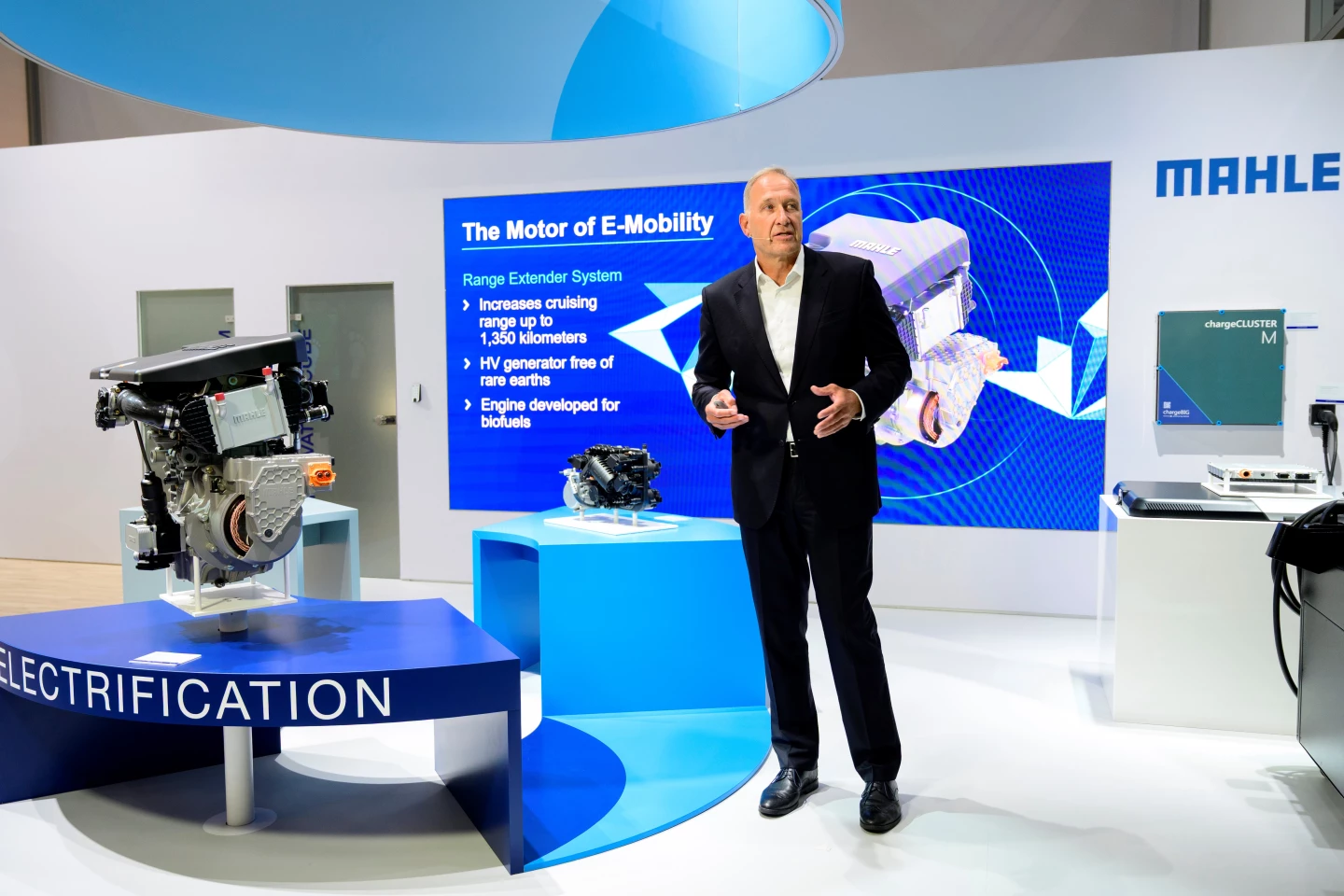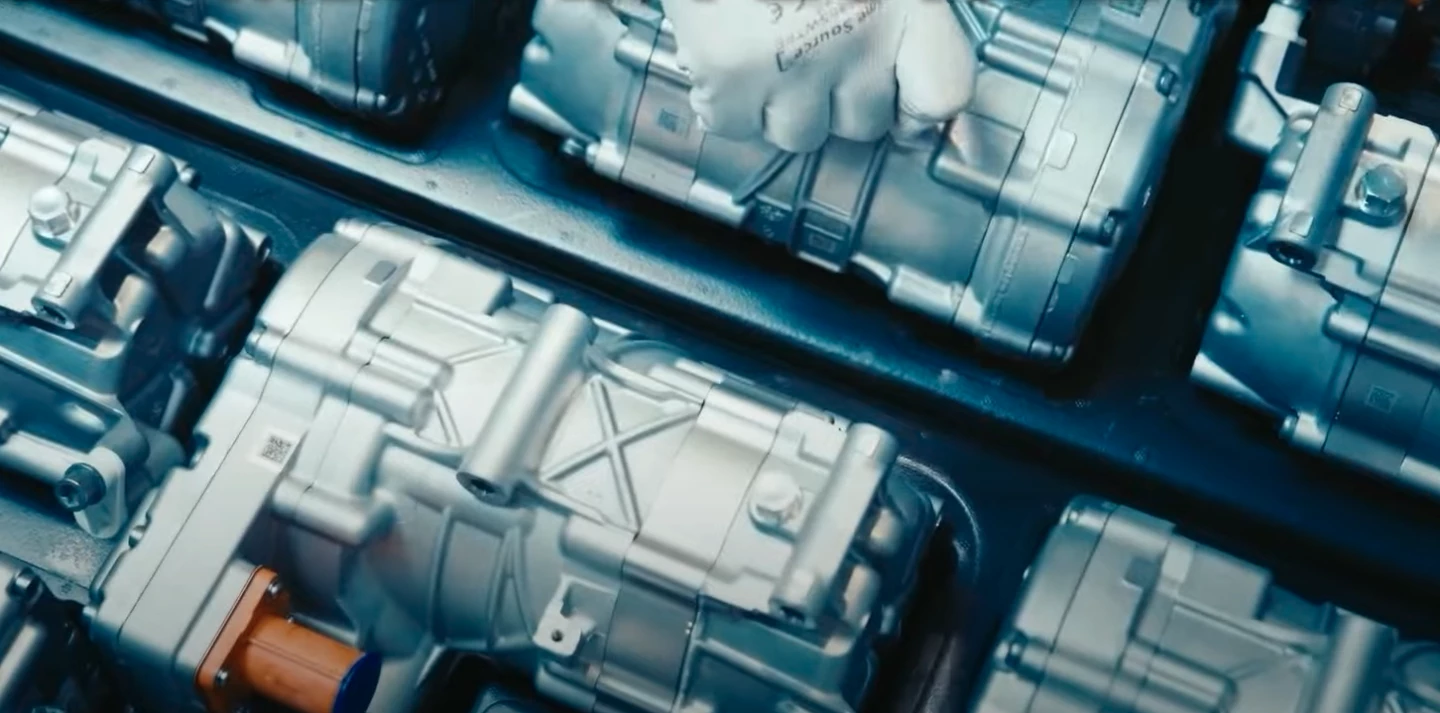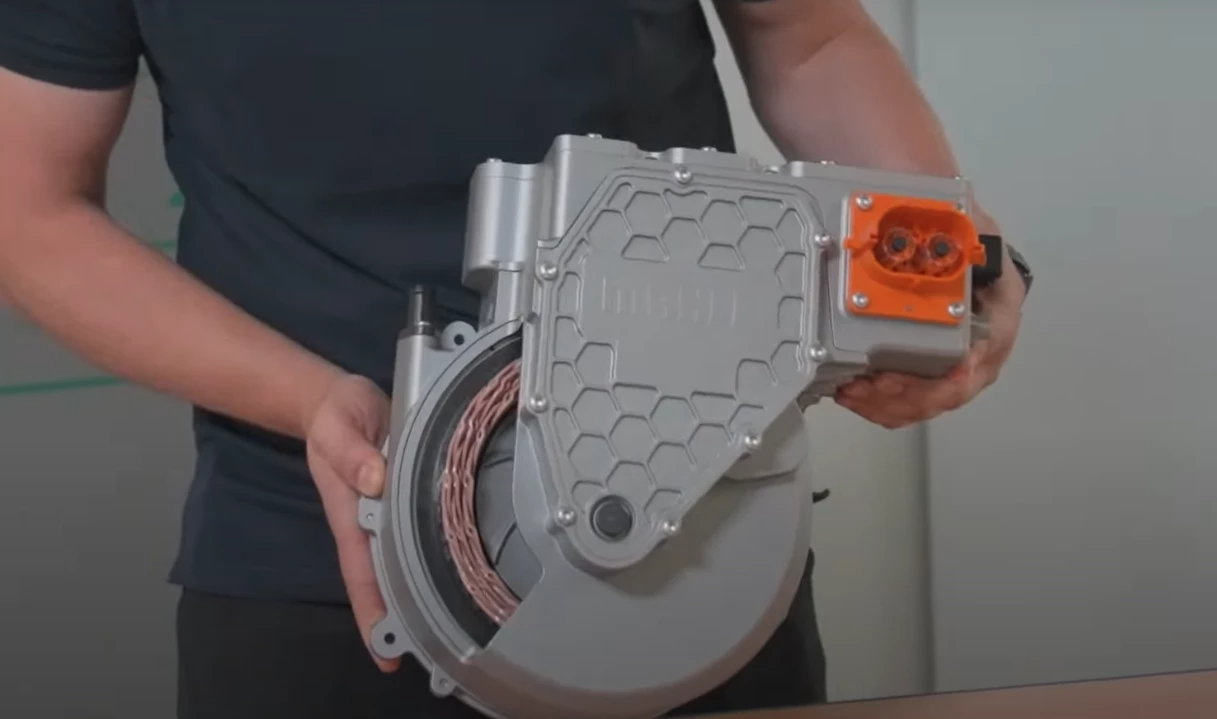Horse Powertrain wasn't the only automotive supplier showing an efficiently packaged range-extender engine system at this year's IAA Mobility Munich show, which wrapped up over the weekend. German component builder Mahle took a short break from pushing out compact, torque-maximizing ebike motors to reveal a small, high-efficiency multi-fuel engine-generator it says is ready to deliver hybridized driving ranges up to 838 miles (1,350 km), about double that of some of today's longest-range battery electric vehicles.
Mahle views its range-extenders as far more than simple independent add-on, looking at them as one component in a holistic driving architecture in which smaller batteries can replace larger ones while still alleviating, rather than intensifying, range anxiety. Those batteries will then lead to cost, weight and material savings, creating an attractive selection of affordable, efficient new-energy vehicles with more overall range, simple and flexible refueling options, and zero-emissions local driving.
Company CEO and board chairman Arnd Franz believes range-extended electric vehicles to be an important part of the auto market's future and notes that Europe is lagging behind major global markets like China and North America. In his IAA Mobility press conference speech, Franz noted that political complications are holding Europe back from embracing range-extended electric vehicles as an emissions-cutting solution.
A hot topic of late, the European Union's 2035 target for a 100% reduction in car and van CO2 emissions will mean the end of the road for combustion engines in new vehicles. The European auto industry has identified that goal as infeasible and has been ramping up pressure on the European Commission, the EU's primary executive body, to withdraw the complete ban and instead work to encourage other emissions-cutting options beyond just battery-powered EVs, including hybrids, hydrogen engines and sustainable fuels.

"Mahle is doing its homework and working on the decarbonization of road traffic in all areas of technology," Franz said at the show. "Europe must now follow the other major world markets and allow competition between all technologies in its CO2 regulation. This is not just a matter of climate protection but also of Europe's competitiveness."
Those words came several days before a meeting between European Commission President Ursula von der Leyen and key EU auto industry executives last Friday. Following the meeting, Von der Leyen agreed to fast-track the review of the 2035 ban it had originally planned for 2026. It will now undertake that review before the end of 2025.
Assuming the EC works with the auto industry toward broadening out their CO2-cutting goals and means, range-extender systems are waiting in the wings as an immediate, ready-to-install solution. Mahle notes that the market for range-extended electric vehicles is expected to grow by 15% each year until 2030. It does not intend to miss out on that opportunity.

The all-in-one range-extender system Mahle revealed at IAA Mobility is ready for series production, the company says. The new unit builds on some of the pioneering work Mahle has done in developing next-gen electric technologies like magnet-free and ultra-high efficiency motors, incorporating an 800-V generator that can run without the use of rare-earth magnetic materials thanks in part to a direct rotor cooling system. The generator is designed to run at over 97% efficiency, producing a continuous output of 85 kilowatts to charge the electric vehicle's onboard battery pack.
The small turbocharged engine part of the equation is also highly efficient, relying on Mahle's Jet Ignition system to run at an impressive 42% efficiency, well higher than the 30% ICE average cited by both the American Automobile Association and the US Department of Energy. A feature we've seen previously in a very different style of engine – Zenvo's 1,200-hp quad-turbo Mjølner V12 – the Jet Ignition replaces the common spark plug with a small pre-chamber that discharges fast heat jets through a series of nozzles, delivering rapid, stable combustion that ultimately increases compression ratio without knocking and reduces fuel consumption.
While total driving range will, of course, ultimately depend on the battery vehicle to which the range-extender is mated, Mahle's estimated 838-mile (1,350-km, WLTP) range per charge/fill-up is more than three times the 249-mile (400-km) average range of EU electric vehicles in 2024 as cited by the International Energy Agency. The figure also doubles (or more) most of the rangiest EU-market electric cars listed in the EV Database.
Clearly an efficient, little range-extender could do a number on range anxiety.

Of course, most drivers don't need close to 840 miles of range, particularly when they have a fuel-powered engine-generator on board for easy, flexible refueling. But by adding such a unit to their EV architecture, automakers gain serious flexibility in adjusting the size of the battery accordingly for the right balance of battery and engine-extended range and weight for the vehicle and price point in question.
Like Horse's C15 engine-generator, Mahle's range-extender is design to run on renewable biofuels, letting automakers better adapt it to their greater emissions-cutting strategy.
The 2035 engine ban review is one we'll be watching with interest to gain a better understanding of how range-extender systems from the likes of Mahle and Horse will fit into the future European auto market.
Source: Mahle










